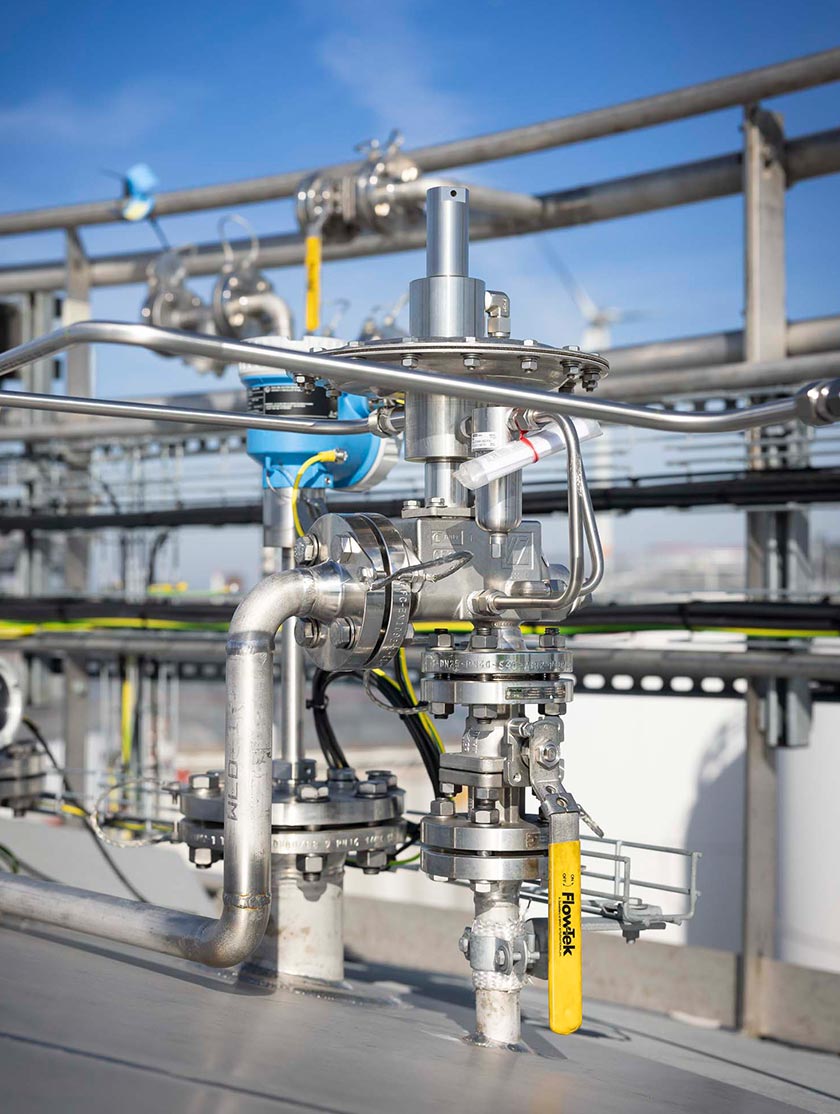Differences Between Gas and Liquid Pressure Reducing Regulators
Differences Between Pressure Reducing Regulators for Gas and Liquid Applications
Pressure reducing regulators (PRRs) are critical components in fluid control systems designed to maintain a constant downstream pressure, regardless of upstream pressure fluctuations. Although their basic purpose remains the same in all applications, pressure reducing regulators for gas applications differ significantly from those for liquid applications in terms of design, materials, and operational aspects. Understanding these differences is critical for engineers, technicians, and facility managers to ensure optimal system performance, safety, and longevity.1. Fluid Properties and Influence on Regulator Design
The primary difference between pressure reducing regulators for gases and liquids lies in the properties of the fluids being regulated:- Compressibility: Gases are compressible fluids, while liquids are nearly incompressible. This difference affects how pressure changes are handled within the regulator.
- Density and viscosity: Liquids typically have a higher density and viscosity than gases, which affects flow dynamics and regulator sizing.
- Phase change: Liquids can vaporize or hold gases in suspension under certain conditions, potentially affecting regulator operation.
2. Internal Design and Operation
- Gas pressure reducing regulators: These regulators are designed to handle compressible flows. They often incorporate features such as larger orifices and special valve seat designs to compensate for rapid volume changes and avoid problems such as restricted flow or excessive noise (e.g., "wobble" or "flicker"). The diaphragm and spring mechanisms are calibrated to respond quickly and maintain a constant output pressure despite fluctuations in the inlet area.
- Liquid pressure reducing regulators: In contrast, these regulators handle incompressible flows, requiring a more robust valve design to withstand potential water hammer or pressure surge effects. Valve seats and seals must withstand high pressure differentials without leakage. Liquid regulators are often designed to prevent cavitation, a harmful phenomenon in which vapor bubbles form and collapse due to local pressure drops within the regulator.
3. Materials and Seals
Due to the different physical and chemical properties of gases and liquids, material selection for pressure reducing regulators varies:- Gas regulators: Typically made from materials compatible with the specific gas type (e.g., brass, stainless steel, or aluminum). Seals must resist permeation and chemical reactions with gases such as natural gas, oxygen, or hydrogen. Special coatings or treatments are often applied to prevent corrosion and contamination.
- Liquid regulators: Often made of stainless steel or other corrosion-resistant materials, suitable for water, oils, or chemicals. Seals are typically made of elastomers and are designed to withstand higher pressures and avoid swelling or deterioration from contact with liquids. The risk of particulate contamination is generally higher, so internal filters or mesh may be included.
4. Pressure and Flow Considerations
- Gas regulators: The flow rate through gas pressure reducing regulators is usually volumetric and measured in standard cubic feet per minute (SCFM). The system must handle pressure drops and maintain the outlet pressure even when gas compressibility causes fluctuations in density and flow rate.
- Liquid regulators: The flow rate is usually measured in gallons per minute (GPM) or liters per minute (LPM) and involves controlling pressure drops to maintain a constant downstream pressure without inducing cavitation or causing excessive turbulence.
5. Applications and Safety Concerns
- Gas Service: Gas pressure reducing regulators are commonly used in residential, commercial, and industrial gas distribution systems, such as natural gas, propane, or compressed air supply lines. Safety is essential to prevent leaks and explosion risks. Therefore, regulators often comply with specific gas industry standards (e.g., ANSI, CSA).
- Liquid Services: These regulators are typically used in water treatment plants, hydraulic systems, and chemical processes. They must provide a constant pressure for downstream pumps and equipment while preventing damage from water hammer or cavitation.
Conclusion
Although pressure reducing regulators for gas and liquid applications share the primary function of maintaining a constant downstream pressure, their design, material selection, and functional requirements differ significantly due to the unique characteristics of gases versus liquids. Proper selection based on fluid type, pressure ranges, and application environment is critical to system reliability and safety. Understanding these differences helps engineers optimize performance, reduce maintenance costs, and prevent system failures in fluid handling.
Need the Right Pressure Reducing Regulator? Get Expert Help Selecting the Ideal Regulator Engineered for Performance |
Cashco’s pressure reducing regulators are designed for precise pressure control across a wide range of industrial applications—delivering reliability, safety, and efficiency. For more information about Cashco's regulators, view all models here .
Cashco is dedicated to ensuring you select the best solution for your tank protection needs. Need help choosing the right pressure reducing regulator? Contact us and our experienced team will gladly assist you in finding the ideal product!
Animated Guide: Pressure Reducing Regulator Function |
Discover the workings of a pressure reducing regulator in our animation video. Using the force-balance principle, this device reduces and maintains downstream pressure in a pipeline. Watch as we demonstrate how the regulator’s diaphragm and valve assembly create resistance to reduce upstream pressure. Learn how downstream flow demands impact the regulator, causing it to adjust and maintain a constant pressure.



